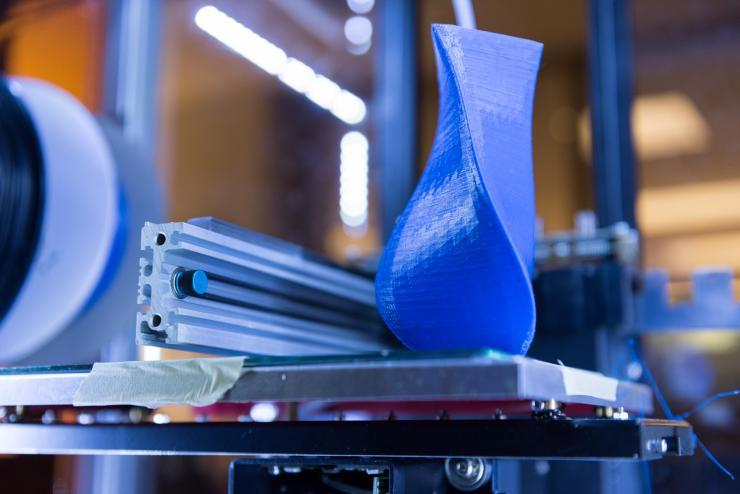Research Raises Awareness of Indoor Air Quality Risk from 3D Printers
Nov 12, 2018 — Atlanta, GA

3D Printed Object (Credit: Rob Felt)
Consumer-oriented 3D printers could show up on many holiday wish lists this year, and purchasers should be aware of research conducted at Georgia Institute of Technology that highlights how the popular low-cost devices could pose a health risk by harming indoor air quality.
A recently completed multi-year research project, sponsored by UL Chemical Safety, was aimed at characterizing particle emissions by the printers in a controlled environment.
The researchers found that the printers generate a range of different-sized particles, including ultrafine particles (UFPs), which have the potential to be inhaled deep into the human pulmonary system and impact respiratory health.
“These printers tend to produce particles that are very small, especially at the beginning of the print process, and in an environment without good ventilation, they could significantly reduce indoor air quality,” said Rodney Weber, a professor in Georgia Tech’s School of Earth & Atmospheric Sciences who led the research.
Many of the findings were published in 2018 and 2017 in Aerosol Science and Technology and other studies are forthcoming.
The research endeavor revealed that more than 200 different volatile organic compounds (VOCs), many of which are known or suspected irritants and carcinogens, are released while 3D printers are in operation.
Several factors, including nozzle temperature, filament type, filament and printer brand, and filament color, affected emissions. Meanwhile extrusion temperature, filament material and filament brand were found to have the greatest impact on emission levels.
“We found that one of the overriding principles is the temperature of the filament,” Weber said. “If you use a filament that requires a higher temperature to melt, such as ABS plastic, you produce more particles than PLA plastic filaments, which require lower temperatures.”
As a result of the research, UL is advocating for a complete risk assessment of all 3D printers, taking into account dose and personal sensitivity considerations as well as the publication of more marketplace information about each printer to help consumers choose safer options.
“Following our series of studies – the most extensive to date on 3D printer emissions – we are recommending additional investments in scientific research, product advancement to minimize emissions, and increased user awareness so that safety measures can be taken,” said Marilyn Black, vice president and senior technical advisor at UL.
In the meantime, some measures can be taken by operators of 3D printers to lessen their impact on air quality.
- Operating 3D printers only in well-ventilated areas
- Setting the nozzle temperature at the lower end of the suggested temperature range for filament materials
- Standing away from operating machines
- Using machines and filaments that have been tested and verified to have low emissions.
Based on the scientific research conducted with Georgia Tech and further collaboration with other stakeholders, UL developed an ANSI consensus standard for testing and evaluating 3D printer emissions to set emissions targets for 3D printer manufacturers. UL/ANSI 2904 is in the final stages of completion and should be available in December 2018.
This story was adapted from content provided by UL Chemical Safety.
The nozzle of a consumer-oriented 3D printer (Credit: UL Chemical Safety)
Research News




